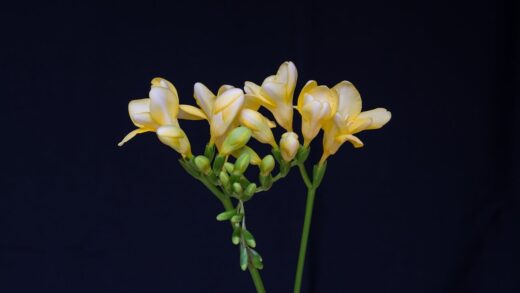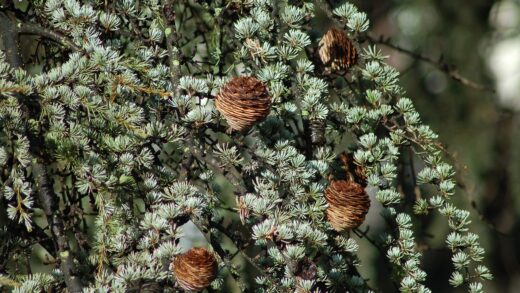Successfully overwintering a lemon-scented geranium is a crucial skill for gardeners in climates where temperatures drop below freezing, as these tender perennials will not survive the harsh conditions of a cold winter outdoors. The process involves bringing the plant into a protected environment and adjusting its care to accommodate its natural period of dormancy. This is not simply a matter of moving a pot indoors; it requires a thoughtful transition to prevent shock and the creation of a suitable indoor climate that allows the plant to rest and conserve its energy for the next growing season. A well-managed overwintering period ensures the survival of your cherished plant and sets it up for vigorous growth when spring returns.
The primary goal of overwintering is to keep the plant alive in a state of suspended animation, rather than to encourage active growth. Attempting to maintain summer conditions indoors often leads to weak, spindly growth due to insufficient light, and increases the plant’s susceptibility to pests and diseases. Instead, the aim is to provide cool temperatures and bright light, which mimic the conditions of its native, mild-winter habitat. This dormant phase is a natural part of the plant’s life cycle, allowing it to consolidate resources and prepare for the energetic demands of the coming spring.
Preparation is key to a successful transition. This begins in the late summer and early autumn, well before the first frost is anticipated. It involves gradually acclimating the plant to lower light levels and reducing water and fertilizer to signal the end of the growing season. It also includes a thorough inspection and treatment for any pests to avoid bringing an infestation indoors, where it could spread rapidly to other houseplants. A clean and healthy plant is far more likely to endure the stresses of winter.
There are several methods for overwintering geraniums, ranging from keeping them as potted houseplants to storing them as dormant, bare-root plants. The best method for you will depend on the space, light, and temperature conditions you can provide. Regardless of the technique chosen, understanding the plant’s need for rest is the fundamental principle that underpins success. With the right preparation and care, your lemon-scented geranium will not only survive the winter but will emerge in the spring ready to flourish once again.
Preparing the plant for indoors
The transition from an outdoor to an indoor environment can be a shock to a plant, so preparation should begin several weeks before the first expected frost date. A crucial first step is to thoroughly inspect your lemon-scented geranium for any pests. Pests that may have been kept in check by natural predators outdoors can quickly multiply in the stable conditions of an indoor setting. Carefully examine the stems, the tops and undersides of leaves, and the soil surface for common culprits like aphids, whiteflies, spider mites, and mealybugs.
More articles on this topic
If any pests are found, it is essential to treat the plant before bringing it inside. A strong spray of water from a hose can dislodge many pests. For more persistent issues, treat the plant with insecticidal soap or neem oil, ensuring complete coverage. It may require a couple of applications spaced a week apart to eliminate all pests and their eggs. Bringing a pest-free plant indoors is a critical step to protect it and any other houseplants you may have.
In the weeks leading up to the move, it’s also wise to prune the plant back. Trimming the overall size of the plant by about one-third to one-half makes it more manageable indoors and also removes any weak or leggy growth from the end of the season. This hard pruning encourages the plant to focus its energy on its root system during dormancy rather than trying to support excessive foliage in the low-light conditions of winter. Use clean, sharp shears to make cuts just above a leaf node.
Finally, begin to acclimate the plant to the lower light levels it will experience indoors. If the plant has been in full sun, start by moving it to a shadier spot outdoors for a few hours each day, gradually increasing the time it spends in the shade over a week or two. This process of hardening off in reverse helps to reduce the stress of the move and minimizes the leaf drop that can occur when a plant is abruptly moved from a high-light to a low-light environment.
Ideal indoor conditions for dormancy
Once inside, the goal is to provide an environment that encourages dormancy, not active growth. The ideal location for an overwintering lemon-scented geranium is a place that is both cool and bright. An unheated porch, a frost-free garage with a window, a cool basement with grow lights, or even a chilly spare room can provide the right conditions. The key is to find a spot where the temperature remains consistently cool, ideally between 5 and 10 degrees Celsius.
More articles on this topic
Light is the other critical component. While the plant is dormant, it still needs bright light to survive. The best possible location is a south-facing window in a cool room, where the plant can receive the maximum amount of available sunlight during the short winter days. If you lack a location that is both cool and bright, you will have to compromise. In such cases, prioritize cool temperatures over bright light, as warmth combined with low light is a recipe for weak, stretched-out growth and pest problems.
Humidity is generally not a major concern during the winter, as the cool temperatures reduce the risk of fungal diseases. However, the air in centrally heated homes can become extremely dry, which can be stressful for the plant. Placing the pot on a tray of pebbles filled with water can help to increase the ambient humidity immediately around the plant. Just ensure that the bottom of the pot is sitting on the pebbles and not directly in the water.
Avoid placing your overwintering geranium near sources of heat, such as radiators, heating vents, or fireplaces, as the warm, dry air can desiccate the plant and encourage pests like spider mites. Also, keep it away from drafty doors and windows where it could be exposed to sudden, cold blasts of air. A stable, cool, and bright environment is the trifecta for successful overwintering, allowing the plant to rest peacefully until spring.
Watering and care during winter
Caring for a dormant lemon-scented geranium during the winter is primarily a matter of restraint, especially when it comes to watering. In its resting state, the plant’s metabolic activity slows dramatically, and its need for water is drastically reduced. The most common mistake made during overwintering is providing too much water, which will quickly lead to root and stem rot in the cool, dormant conditions. The plant’s water requirements will be minimal throughout this period.
The correct approach is to water only when the soil is completely dry to the touch. This could be as infrequently as once every three to six weeks, depending on the temperature and humidity of your storage location. When you do water, provide just enough to lightly moisten the soil, but not so much that it becomes saturated or that a large amount of water runs out of the bottom. The goal is simply to prevent the root ball from turning into a desiccated, lifeless brick.
Throughout the winter, you should completely withhold any form of fertilizer. The plant is not actively growing and cannot use the nutrients. Fertilizing a dormant plant is not only unnecessary but also harmful, as the unused mineral salts can build up in the soil and damage the resting root system. Feeding should not resume until you see clear signs of new growth in the early spring.
It is normal for the plant to lose some of its leaves during the winter; this is part of the dormancy process. Periodically check the plant and remove any yellowing or dead leaves to maintain good air circulation and prevent any potential mold or disease issues from developing. Aside from this minimal tidying and the occasional, sparse watering, the best care you can give your dormant geranium is to simply leave it alone to rest.
Waking the plant up in spring
As the days begin to lengthen and the first signs of spring appear, usually in late winter or early spring, it is time to start the process of waking your lemon-scented geranium from its dormancy. The first indication that the plant is ready to resume growth will be the appearance of tiny new leaves or the swelling of nodes along the stems. This is the signal to begin gradually transitioning it back into an active growing state.
Start by moving the plant to a slightly warmer and brighter location. If you pruned it back in the autumn, now is a good time for a final shaping, trimming any stems that may have died back over the winter and encouraging a good structure for the new season’s growth. This spring pruning will stimulate the plant to produce fresh, vigorous shoots. Make your cuts just above an outward-facing node to direct the new growth outwards.
Once you have moved the plant and completed any necessary pruning, you can perform the first proper watering of the season. Water the plant thoroughly until water runs from the drainage holes, which will help to rehydrate the entire root ball. After this initial deep watering, you can begin to resume a more regular watering schedule, allowing the top few centimeters of soil to dry out between applications. This is also the time to apply the first dose of fertilizer, typically a balanced, water-soluble formula at half strength.
Do not be tempted to move the plant directly outdoors into the full sun. Just as it needed to be acclimated to indoor conditions in the autumn, it now needs to be gradually hardened off to the more intense outdoor environment. Begin by placing it outside in a sheltered, shady spot for a few hours on a mild day. Over the course of one to two weeks, gradually increase the amount of time it spends outside and slowly introduce it to more direct sunlight. This careful reintroduction will prevent sunburn and shock, ensuring a seamless transition back into a thriving outdoor plant.


















